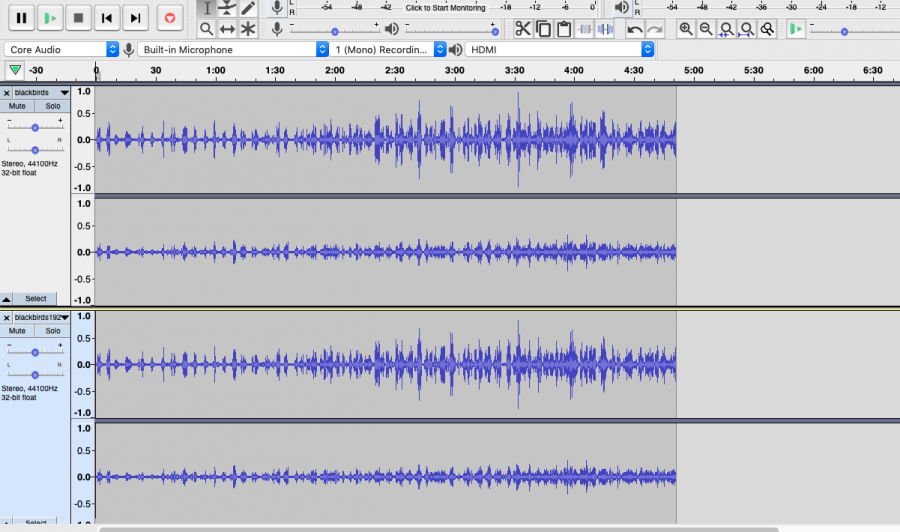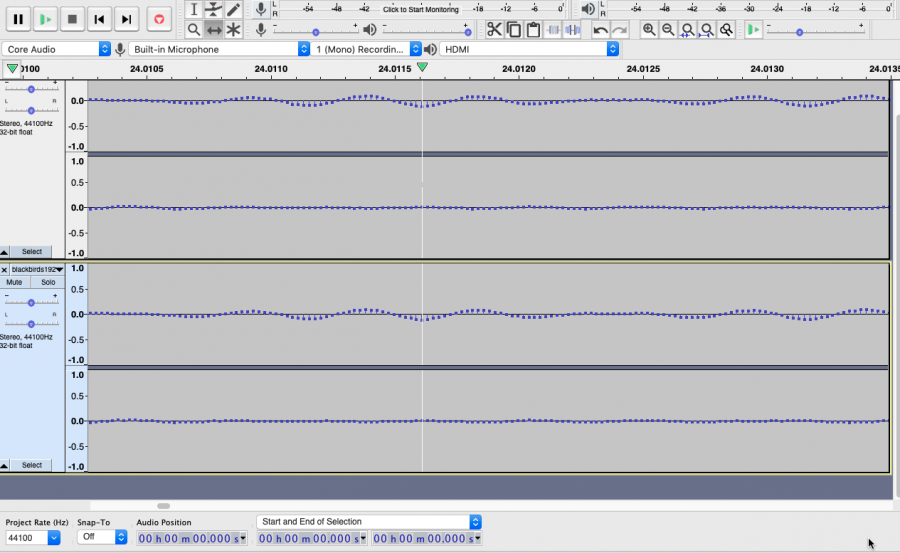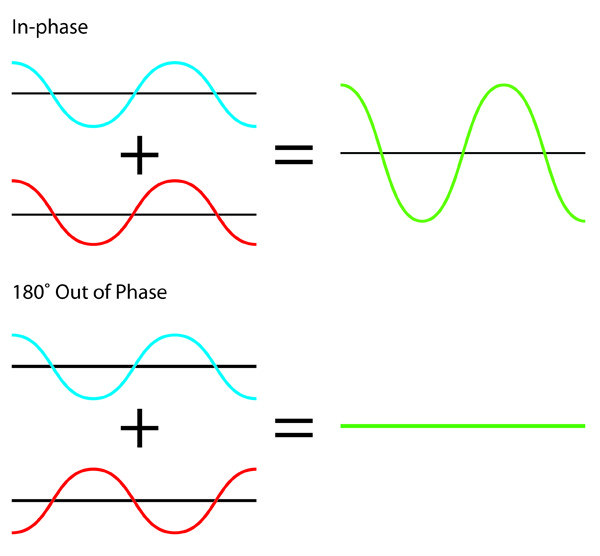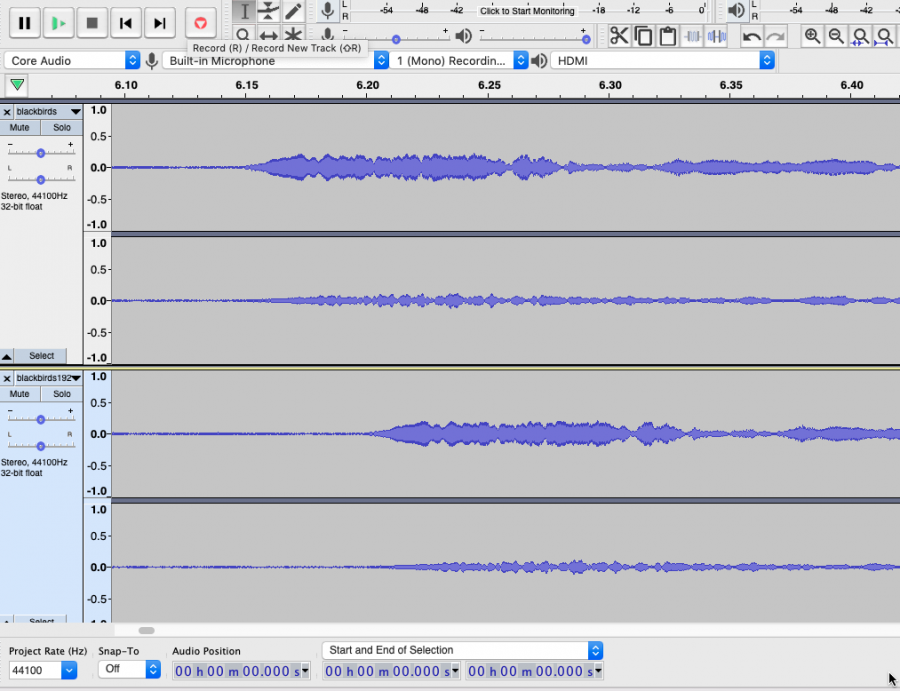Difference between revisions of "Case Study 02: The Mp3"
(Created page with "'''How recorded sound traveled from the phonograph to the vinyl, magnetic tape, audio disk, hard drive and finally in the clouds''' =Now, not only the rich can enjoy music i...") |
|||
| (8 intermediate revisions by the same user not shown) | |||
| Line 3: | Line 3: | ||
=Now, not only the rich can enjoy music in the comfort of one's house!= | =Now, not only the rich can enjoy music in the comfort of one's house!= | ||
| + | |||
| + | |||
| + | [http://oyoana.com/sound A very short history of SOUND ART] | ||
*phonograph ===> recorded sound at home | *phonograph ===> recorded sound at home | ||
| Line 14: | Line 17: | ||
*compact disk ==> digital, better quality and also dead | *compact disk ==> digital, better quality and also dead | ||
| − | *the mp3 on the hard drive ===> | + | *the mp3 on the hard drive ===> not a physical object but still tangible, and still owned (by everyone), the promiscuity of the mp3 format |
| + | ==Technologies as artifacts that embody forms of power and authority== | ||
| + | Scholars in a range of fields – philosophy of technology, science and technology studies and the cultural study of technology – have all advocated the study of technologies as artifacts. Philosopher Langdon Winner writes that technological artifacts ‘embody specific forms of power and authority’ (1986: 19). He groups the politics of technologies into two main categories: ‘instances in which the invention, design, or arrangement of a specific technical device or system becomes a way of settling an issue in the affairs of a political community’, and ‘“inherently political technologies”, man-made systems that appear to require or be strongly compatible with particular kinds of political relationships’ (1986: 22). In Winner’s heuristic, the mp3 partakes of both categories: it originated as an attempt to solve the problem of exchangeable formats across segments of the media industry and it may require particular social and cultural systems of both intellectual property and listening. The mp3 is an artifact in another sense. The mp3 is a crystallized set of social and material relations. It is an item that ‘works for’ and is ‘worked on’ by a host of people, ideologies, technologies and other social and material elements. Writers in the social construction of technology and actor–network theory traditions (e.g. Bijker, 1995; Latour, 1996; Pinch and Bijker, 1984) have focused on the relation of human and non-human actors in the construction of technologies, showing how technologies come together from what one might consider otherwise as disparate elements. Cultural studies of technology have been more concerned with broader accounts of social context and stratified social power as they shape technologies and as technologies are implicated in these contexts (see e.g. Slack, 1984; Stabile, 1994; Wise, 1997). But all these approaches point to the artifactual nature of technologies such as the mp3. They urge us to consider it as a result of social and technical processes, rather than as outside them somehow. Uncovering that process is not simply a matter of showing the artificiality or ‘constructedness’ of the mp3, although that is part of the project. This article will use the mp3 as a tour guide for social, physical, psychological and ideological phenomena of which otherwise we might not have been fully aware. It will consider the mp3 as an artifact shaped by several electronics industries, the recoding industry and actual and idealized | ||
| + | practices of listening. | ||
| − | + | '' 'The mp3 as cultural artifact', JONATHAN STERNE, McGill University, Canada'' <br> | |
| − | + | [[File: Mp3 cultural artifact.pdf]] | |
To understand the full significance of the tangibility of recorded sound, we must know something about the specific physical characteristics of the various media, and the differences among them. Consider, for example, the cassette tape. Developed in 1963 by the Dutch company Philips, the small plastic cassette was markedly different from its predecessor, the longplaying record. Perhaps most important was that its physical characteristics made recording and duplication much easier and cheaper than had been possible in the LP era. As Peter Manuel asserts in his 1993 book Cassette Culture, these attributes have led to enormous changes in music and musical life. And so in sound and art's relationship with it as we have earlier discussed. | To understand the full significance of the tangibility of recorded sound, we must know something about the specific physical characteristics of the various media, and the differences among them. Consider, for example, the cassette tape. Developed in 1963 by the Dutch company Philips, the small plastic cassette was markedly different from its predecessor, the longplaying record. Perhaps most important was that its physical characteristics made recording and duplication much easier and cheaper than had been possible in the LP era. As Peter Manuel asserts in his 1993 book Cassette Culture, these attributes have led to enormous changes in music and musical life. And so in sound and art's relationship with it as we have earlier discussed. | ||
| − | + | =The mp3 as cultural artifact= | |
The mp3 has been the case in point in a major international controversy over the status of intellectual property, copyright and the economics of entertainment. | The mp3 has been the case in point in a major international controversy over the status of intellectual property, copyright and the economics of entertainment. | ||
| + | It also unveils various dimensions of the relationship between the so-called ‘new’ media and the human body. | ||
| + | |||
| + | ==Mp3 short history== | ||
| − | = | + | [https://www.youtube.com/watch?v=jCO9LV-D5f4] |
| + | • 1987 - The Fraunhofer Institut in Germany began researching high-quality low bit-rate audio coding. It was called the EUREKA project EU147, Digital Audio Broadcasting. | ||
| − | ===Using phase cancellation in Audacity== | + | • January 1988 - The Moving Picture Experts Group, or MPEG, was established. |
| + | |||
| + | • April 1989 - Fraunhofer received a patent in Germany for MP3. | ||
| + | |||
| + | • 1992 - Dieter Seitzer, who helped with the Fraunhofer with its research, integrated his audio coding with MPEG-1. | ||
| + | |||
| + | • 1993 - The MPEG-1 standard was published. | ||
| + | |||
| + | • 1994 - The MPEG-2 standard was developed and then published a year later. | ||
| + | |||
| + | • Nov. 26, 1996 - The U.S. patent for MP3 was issued. | ||
| + | |||
| + | • September 1998 - Fraunhofer began enforcing patent rights. Whoever used the MP3 audio coding paid a licensing fee to Fraunhofer. | ||
| + | |||
| + | • February 1999 - SubPop, a recording company, distributed music under the MP3 format, the first such company to do so. | ||
| + | |||
| + | • 1999 - The first portable MP3 players appear. | ||
| + | |||
| + | • 2017 - licensing for MP3-related patents has ended. | ||
| + | |||
| + | |||
| + | ==Napster== | ||
| + | |||
| + | |||
| + | We’ve always swapped vinyl, cassette tapes and CDs and later recorded and burned music from friends who were the first to get the latest albums from our favourite artists. Then MP3 came along and Napster introduced a whole new meaning to how we shared. | ||
| + | |||
| + | [https://www.youtube.com/watch?v=6Ai6K2VIEXM] | ||
| + | [https://www.youtube.com/watch?v=_5wnNgkP3sY] | ||
| + | |||
| + | =The dead frequencies of a "dead" media object= | ||
| + | |||
| + | ==Using phase cancellation in Audacity== | ||
| + | |||
| + | [https://manual.audacityteam.org/man/invert.html INVERTING] | ||
[[File:Phasecancellation.jpg]] | [[File:Phasecancellation.jpg]] | ||
| + | |||
| + | |||
| + | Export a WAV file to MP3 in 320 kbps (to see what is lost at max quality... ghostly) | ||
| + | [[File:Exportmp3.png | 900 px]] | ||
| + | |||
| + | |||
| + | |||
| + | place the exported mp3 under the original wav | ||
| + | [[File:Placeunder.png | 900 px]] | ||
| + | |||
| + | |||
| + | |||
| + | You will see they do not mach | ||
| + | [[File:Notmatching.png | 900 px]] | ||
| + | |||
| + | |||
| + | |||
| + | thats tricky....we must perfectly align them (deeply zoomed in) | ||
| + | [[File:Align.png | 900 px]] | ||
| + | |||
| + | |||
| + | |||
| + | then select the mp3 track and go to Effects-->Invert. Take a listen | ||
| + | [[File:Invert.png | 900 px ]] | ||
Latest revision as of 17:42, 1 October 2019
How recorded sound traveled from the phonograph to the vinyl, magnetic tape, audio disk, hard drive and finally in the clouds
Now, not only the rich can enjoy music in the comfort of one's house!
A very short history of SOUND ART
- phonograph ===> recorded sound at home
- vinyl ===> more durable and more accessible tech doing the same
- magnetic tape ===> possibility to record one's own content MILESTONE
- cassette tape ===> more accessible and PORTABLE technology (sound goes on the street, peer to peer sharing)From the boombox to the walkman and the begining of hyper individualized listening experiences
- compact disk ==> digital, better quality and also dead
- the mp3 on the hard drive ===> not a physical object but still tangible, and still owned (by everyone), the promiscuity of the mp3 format
Technologies as artifacts that embody forms of power and authority
Scholars in a range of fields – philosophy of technology, science and technology studies and the cultural study of technology – have all advocated the study of technologies as artifacts. Philosopher Langdon Winner writes that technological artifacts ‘embody specific forms of power and authority’ (1986: 19). He groups the politics of technologies into two main categories: ‘instances in which the invention, design, or arrangement of a specific technical device or system becomes a way of settling an issue in the affairs of a political community’, and ‘“inherently political technologies”, man-made systems that appear to require or be strongly compatible with particular kinds of political relationships’ (1986: 22). In Winner’s heuristic, the mp3 partakes of both categories: it originated as an attempt to solve the problem of exchangeable formats across segments of the media industry and it may require particular social and cultural systems of both intellectual property and listening. The mp3 is an artifact in another sense. The mp3 is a crystallized set of social and material relations. It is an item that ‘works for’ and is ‘worked on’ by a host of people, ideologies, technologies and other social and material elements. Writers in the social construction of technology and actor–network theory traditions (e.g. Bijker, 1995; Latour, 1996; Pinch and Bijker, 1984) have focused on the relation of human and non-human actors in the construction of technologies, showing how technologies come together from what one might consider otherwise as disparate elements. Cultural studies of technology have been more concerned with broader accounts of social context and stratified social power as they shape technologies and as technologies are implicated in these contexts (see e.g. Slack, 1984; Stabile, 1994; Wise, 1997). But all these approaches point to the artifactual nature of technologies such as the mp3. They urge us to consider it as a result of social and technical processes, rather than as outside them somehow. Uncovering that process is not simply a matter of showing the artificiality or ‘constructedness’ of the mp3, although that is part of the project. This article will use the mp3 as a tour guide for social, physical, psychological and ideological phenomena of which otherwise we might not have been fully aware. It will consider the mp3 as an artifact shaped by several electronics industries, the recoding industry and actual and idealized practices of listening.
'The mp3 as cultural artifact', JONATHAN STERNE, McGill University, Canada
File:Mp3 cultural artifact.pdf
To understand the full significance of the tangibility of recorded sound, we must know something about the specific physical characteristics of the various media, and the differences among them. Consider, for example, the cassette tape. Developed in 1963 by the Dutch company Philips, the small plastic cassette was markedly different from its predecessor, the longplaying record. Perhaps most important was that its physical characteristics made recording and duplication much easier and cheaper than had been possible in the LP era. As Peter Manuel asserts in his 1993 book Cassette Culture, these attributes have led to enormous changes in music and musical life. And so in sound and art's relationship with it as we have earlier discussed.
The mp3 as cultural artifact
The mp3 has been the case in point in a major international controversy over the status of intellectual property, copyright and the economics of entertainment. It also unveils various dimensions of the relationship between the so-called ‘new’ media and the human body.
Mp3 short history
• 1987 - The Fraunhofer Institut in Germany began researching high-quality low bit-rate audio coding. It was called the EUREKA project EU147, Digital Audio Broadcasting.
• January 1988 - The Moving Picture Experts Group, or MPEG, was established.
• April 1989 - Fraunhofer received a patent in Germany for MP3.
• 1992 - Dieter Seitzer, who helped with the Fraunhofer with its research, integrated his audio coding with MPEG-1.
• 1993 - The MPEG-1 standard was published.
• 1994 - The MPEG-2 standard was developed and then published a year later.
• Nov. 26, 1996 - The U.S. patent for MP3 was issued.
• September 1998 - Fraunhofer began enforcing patent rights. Whoever used the MP3 audio coding paid a licensing fee to Fraunhofer.
• February 1999 - SubPop, a recording company, distributed music under the MP3 format, the first such company to do so.
• 1999 - The first portable MP3 players appear.
• 2017 - licensing for MP3-related patents has ended.
Napster
We’ve always swapped vinyl, cassette tapes and CDs and later recorded and burned music from friends who were the first to get the latest albums from our favourite artists. Then MP3 came along and Napster introduced a whole new meaning to how we shared.
The dead frequencies of a "dead" media object
Using phase cancellation in Audacity
Export a WAV file to MP3 in 320 kbps (to see what is lost at max quality... ghostly)

place the exported mp3 under the original wav

thats tricky....we must perfectly align them (deeply zoomed in)

then select the mp3 track and go to Effects-->Invert. Take a listen


